| Time | Organizational service overview |
|---|---|
| Mar. 1883 | Magnetic observation was initiated at a temporary station in Imai-cho, Akasaka-ku, Tokyo, by the Geographical Bureau of the Ministry of Home Affairs and the Telegraphic Bureau of the Ministry of Industry for the First International Polar Year program. |
| Jan. 1897 | Magnetic and atmospheric electric observation was officially begun at the Central Meteorological Observatory (CMO) [details]. |
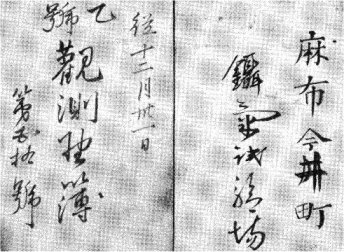
Sourcebook of magnetic observation for First International Polar Year
| Time | Organizational service overview |
|---|---|
| Dec. 1912 | The station was moved to its current location in Kakioka. Magnetic observation was started in January of the following year. |
| Aug. 1920 | The organization became the Kakioka Magnetic Observatory, affiliated with CMO, in line with the Imperial Ordinance No.294 enactment of the Meteorological Observatory Government Regulations. |
| 1924 | Kakioka was designated as an international standard observatory at a conference of the International Union of Geodesy and Geophysics (IUGG). |
| Aug. 1925 | The Main Office Building, Experiment House, Absolute House, Atmospheric Electricity House, dormitories and other structures were completed. |
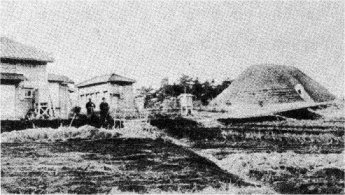
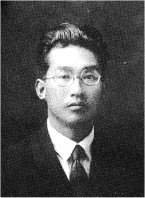
Kakioka Magnetic Observatory circa establishment and founding director Shuichi Imamichi
| Time | Organizational service overview |
|---|---|
| May. 1926 | Seismic observation was begun at Kakioka. |
| Jun. 1929 | Atmospheric electric observation was begun at Kakioka (- Feb. 2021). |
| Jan. 1930 | Observation of solar surface phenomena was begun at Kakioka (- Aug. 1945). |
| Jul. 1932 | For the 2nd International Polar Year, magnetic observation was begun at the new Toyohara Magnetic Observatory on Sakhalin (- Nov. 1946). |
| Aug. 1932 | Geoelectric observation was begun at Kakioka (- Feb. 2021). |
| Jul. 1936 | The organization became Kakioka Magnetic Observatory, CMO. |
| Mar. 1938 | Memoirs of Kakioka Magnetic Observatory was first published. |
| Nov. 1939 | The organization was renamed the Kakioka Magnetic Observatory under an enactment of the Meteorological Office Government Regulations. |
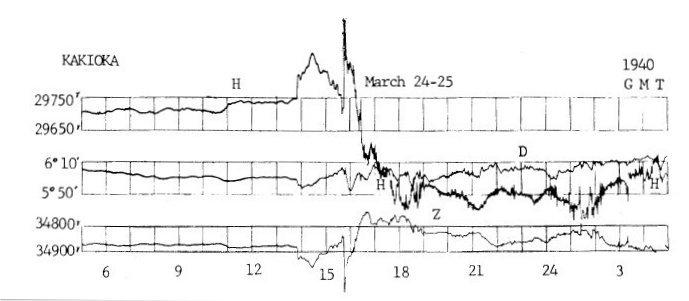
Massive geomagnetic storm observed at Kakioka on 24 March 1940
(variation range of the horizontal component H: 661 nT)
| Time | Organizational service overview |
|---|---|
| Aug. 1946 | The Ikutora Magnetic Observatory was opened (- Aug. 1949). |
| Dec. 1948 | Geoelectric observation was begun at the Kanoya Branch of Kakioka Magnetic Observatory. |
| Jun. 1949 | The organization became a subsidiary of CMO under the enactment of the law to establish the Ministry of Transport. |
| Jun. 1949 | The Haranomachi Observation Facility (originally established in December 1946 as Haranomachi Geoelectric Observatory) and Kanoya Observation Facility (originally established in September 1948 as the Kanoya Branch of Kakioka Magnetic Observatory) were opened. |
| Sep. 1949 | Geoelectric, atmospheric electric (- Mar. 2011) and meteorological observation (- Mar.1997) was begun at the Memambetsu Branch of Ikutora Magnetic Observatory. |
| Sep. 1949 | Meteorological observation was begun at Kanoya (- Jun. 1966). |
| Nov. 1949 | The organization was renamed the Kakioka Magnetic Observatory with internal General Affairs, Geomagnetism, Geoelectricity and Research divisions. |
| Nov. 1949 | Memambetsu Observation Facility (originally established in September 1949 as the Memambetsu Branch of Ikutora Magnetic Observatory) was opened. |
| Jan. 1952 | Magnetic observation was begun at Memambetsu. |
| Jan. 1954 | Certification services were begun. |
| Jul. 1956 | CMO was upgraded to the Japan Meteorological Agency (JMA) as an affiliate agency of the Ministry of Transport. Kakioka Magnetic Observatory was made a subsidiary institution. |
| Mar. 1957 | Standard magnetic theodolite (A-56 and H-56) development was completed and observation was begun (officially adopted in Jan. 1958) |
| Jul. 1957 | Organizational contribution was made to the International Geophysical Year (IGY). Magnetic and geoelectric quick-run observation, geomagnetic variation observation, atmospheric conductivity observation and atmospheric light observation (- Mar. 1998) were begun. |
| Jul. 1957 | Kakioka was designated as a magnetic observatory to report for the Ursigram World Day Service (IUWDS). |
| Sep. 1957 | The internal organization was restructured with General Affairs, Technology, Observation and Research divisions. Haranomachi was closed. |
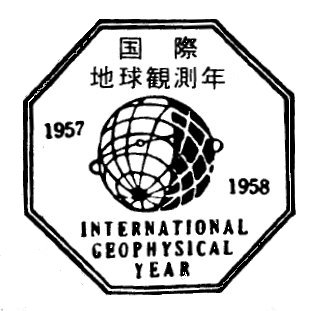
International Geophysical Year (IGY) logo
| Time | Organizational service overview |
|---|---|
| Jan. 1958 | Magnetic observation was begun at Kanoya. |
| Jan. 1961 | Technical Report of the Kakioka Magnetic Observatory was first published (- 2003). |
| Nov. 1963 | Development of a vector proton magnetometer (MO-P type) was completed. |
| Mar. 1964 | The International Quiet Sun Years (IQSY) were adopted, and observation of ultra-low geomagnetic pulsations and other variables was conducted. |
| Mar. 1967 | Geoelectromagnetic earthquake prediction observation (Kakioka 1967, Memambetsu 1968, Kanoya 1969) was begun based on a proposal from the Geodetic Council. |
| Oct. 1967 | Memambetsu was designated as an observatory for data used to determine Northern Hemisphere geomagnetic activity index value (Kn) based on a recommendation from the International Association of Geomagnetism and Aeronomy (IAGA). |
| Dec. 1968 | Conductivity anomaly (CA) observation for earthquake prediction was begun in Iwaki, Fukushima Prefecture. |
| Nov. 1970 | Magnetic observation was conducted on Chichijima Island as part of the International Active Sun Years (IASY) program. |
| Mar. 1972 | A new standard magnetometer facility KASMMER was installed |
| 1972 | The organization contributed to the international Monitoring of the Sun-Earth Environment (MONSEE) project. |
| 1972 | Continuous magnetic observation was begun at the permanent station on Chichijima Island, along with pulsation observation in April of the following year. |
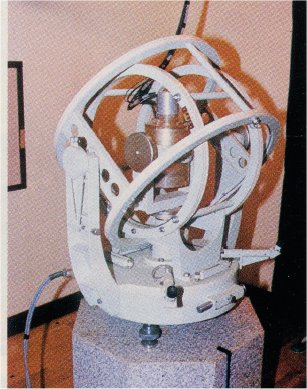
Optical pumping magnetometer of KASMMER
| Time | Organizational service overview |
|---|---|
| 1Jan. 1973 | Kakioka was designated as an observatory for data used to determine geomagnetic storm activity index values (Dst) based on a resolution from the IAGA General Assembly. |
| Sep. 1975 | Kanoya was designated as an observatory for materials for geomagnetic storm definition based on a resolution from the IAGA General Assembly. |
| Apr. 1976 | The organization contributed to the International Magnetospheric Study (IMS) program. Geomagnetic pulsation (ULF) observation was resumed at Kakioka and continued as part of routine operation thereafter. |
| Feb. 1978 | In accordance with the Volcanic Eruption Prediction Plan, continuous observation of total magnetic force and ongoing monitoring of scalar and vector fields were begun at Mt. Sakurajima (- Mar. 1999). Similar observation was also begun at Mt. Aso in February of the following year. |
| Jan. 1980 | A central service for analysis regarding precise nighttime observation of secular variations in total magnetic force was launched in line with the Earthquake Prediction Program. |
| Jul. 1984 | The Kakioka Magnetic Observatory was positioned as an Auxiliary Organ of JMA based on an order for organization from the Ministry of Transport following an amendment to the National Government Organization Law. |
| Aug. 1986 | The organization contributed to emergency volcanic observation of Mt. Izu-Oshima Mihara. Significant anomalous changes in total magnetic force were observed. |
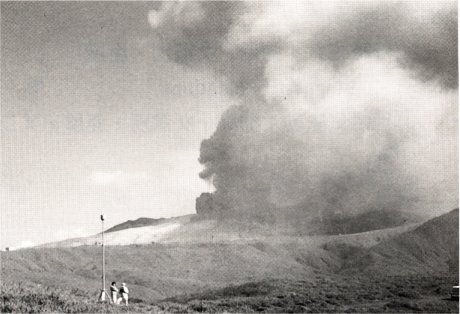
Volcanomagnetic observation using a portable proton magnetometer
| Time | Organizational service overview |
|---|---|
| Mar. 1990 | As part of standard magnetometer (KASMMER) (1990-1993) updates, variation sensor huts were built and a continuous measuring system with Overhauser magnetometers was installed (F-component sensors (Mar. 1992) and 3-component (H, Z, D) sensors (Mar. 1993)). |
| Dec. 1992 | Kakioka was admitted as a member of the world observation network under the Intermagnet project (along with Memambetsu in 1993 and Kanoya in 2002). |
| Mar. 1995 | The Absolute House and instruments for absolute measurement at Kanoya were replaced with the current equipment. |
| Apr. 1995 | General and precise observation for earthquake surveying were discontinued. Earthquake intensity observation was begun. |
| Mar. 1996 | The variation instruments at Kanoya were upgraded to the current versions (along with Kakioka and Memambetsu in Mar. 1997). |
| Jan. 2002 | The first Kakioka Magnetic Observatory newsletter was published. |
| Mar. 2003 | The Kakioka Magnetic Observatory Report (annual report) was published in CD-ROM format. The first Technical Report of the Kakioka Magnetic observatory and partial translations were published. |
| Nov. 2004 | Kakioka hosted the XIth IAGA Workshop on Geomagnetic Observatory Instruments, Data Acquisition and Processing (at Kakioka and the nearby Tsukuba). |
| Apr. 2011 | Memambetsu and Kanoya were made unmanned for remote operation, with structural status changed from branch observatories to observation facilities. |
| Jan. 2013 | The 100th anniversary of magnetic observations at Kakioka. |
| Apr. 2016 | The internal organization was restructured into General Affairs, Technology and Observation divisions. |
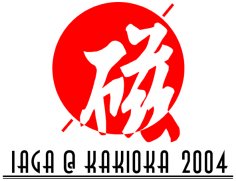
Logo for XIth IAGA Workshop on Geomagnetic Observatory Instruments, Data Acquisition and Processing
Copyright (c) Kakioka Magnetic Observatory, Japan Meteorological Agency. All rights reserved.
